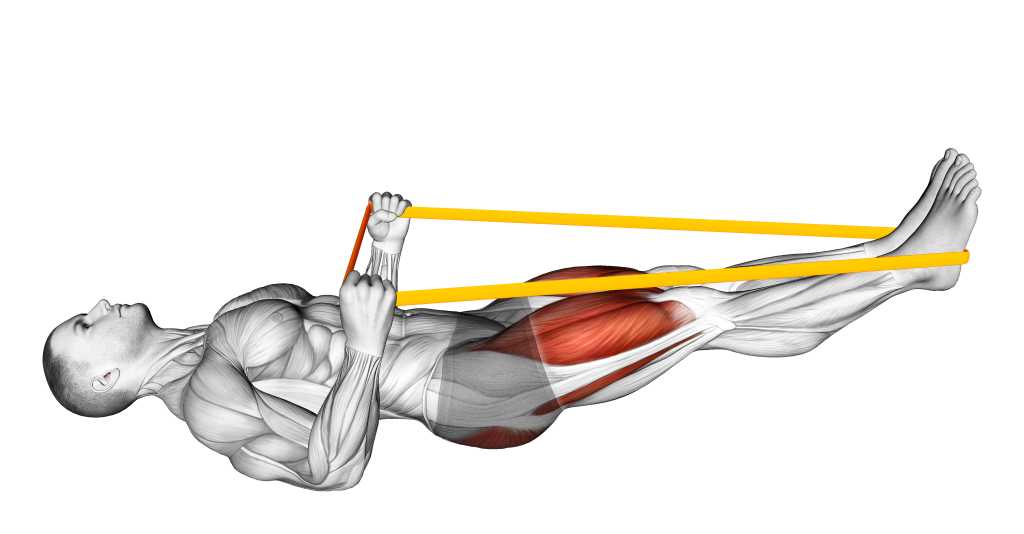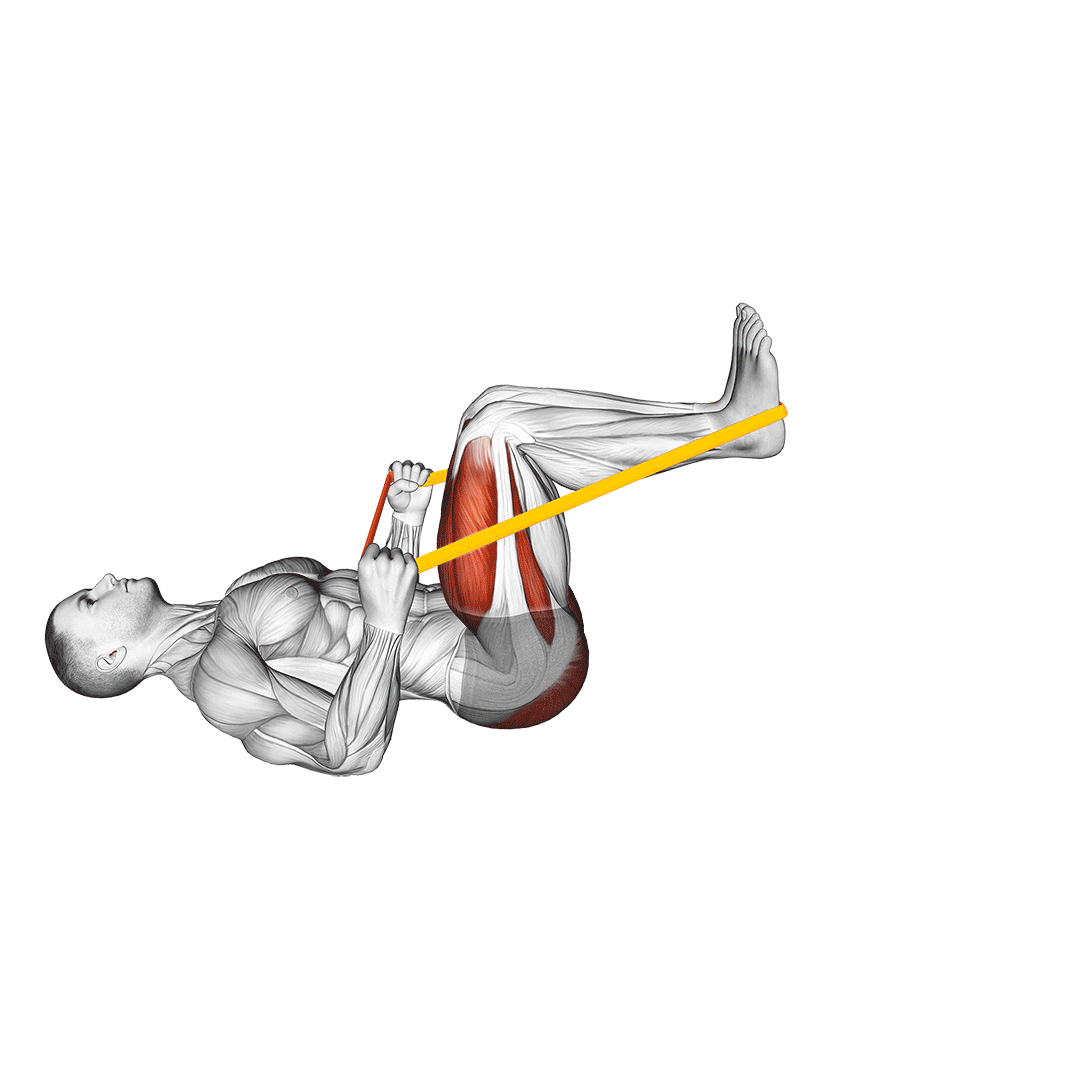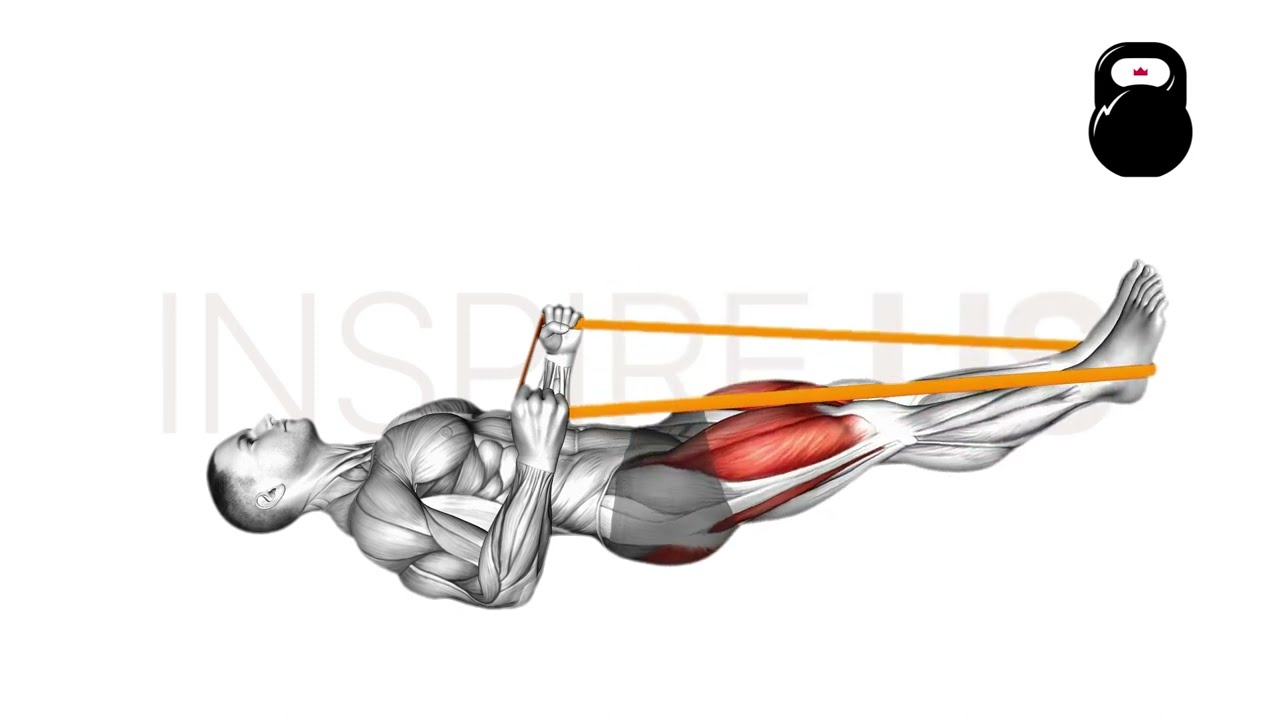Resistance Band Leg Press: Muscles Worked and More
The resistance band leg press is a lower body compound exercise that may be performed either one-legged or bilaterally.
Similar to its more common machine-based counterpart, the resistance band leg press primarily relies on knee extension as its main mechanical action. Though some degree of hip flexion is also present, it is far less significant than the aforementioned knee action.
Resistance Band Leg Press at a Glance
Equipment Requirements
Resistance Band
Main Muscles Targeted
Quadriceps Femoris, Hamstrings, Glutes
Difficulty
Moderate
Sets, Reps, and Load Recommendations
3-5 Sets of 6-12 Repetitions at a Light Load
How to Do the Resistance Band Leg Press
- To perform a repetition of the resistance band leg press, the lifter will first lie flat on the floor - looping one end of the resistance band around the arches of their feet as they raise their knees into the air.
For greater security, one can instead tie the ends around their feet, rather than simply wrapping the band around. - With the band now looped around the feet, the lifter slowly lowers their trunk back towards the floor, keeping tension in the band by holding the opposite end firm in their hands. The core must be braced with the hips and upper back pressed against the ground, bands held securely in place at the chest throughout the set.
- With the upper body now flat along the ground and the knees drawn upwards, the lifter presses through their heels against the resistance of the band and extends their legs outwards.
- Once the legs are fully extended and the quadriceps completely engaged, the lifter then allows the resistance to slowly draw their knees back towards their stomach. The eccentric must be controlled, with the lifter avoiding any sudden jerking movement.
- Knees once again in a state of flexion, the repetition may then be considered complete.
Additional Tips:
The resistance band leg press can be made more or less difficult simply by changing the position of the hands.
As they grip the opposite end of the band, drawing them higher along the trunk (such as along the clavicles or near the face) will increase the tension within the band, forcing the lower body to work harder.
Another aspect of the movement that can aid with specificity is changing the angle that the legs extend at. Keeping the legs parallel to the floor will involve the quadriceps even further, whereas a more upward-facing angle will focus on the hamstrings to a comparatively greater extent.
What Muscles Do Resistance Band Leg Presses Work?
The majority of leg press variations are considered compound movements - the resistance band variant being no exception.

Compound exercises target more than a single major muscle group at a time, with the banded leg press mainly working the quadriceps as its primary mobilizer muscle.
Alongside the quads are the hamstrings and (to a far lesser extent) the glutes, of which work as secondary mobilizers.
Common Resistance Band Leg Press Mistakes to Avoid
Apart from ensuring the band is secured around the feet, lifters should also look out for the following common mistakes as well.
Using the Calf Muscles
If the band is positioned too high along the foot, lifters may unconsciously perform a calf raise motion as they extend their legs. This can lead to a small shift of resistance away from the intended muscle groups, as well as potentially leading to injuries of the distal leg tendons.

The band itself should be positioned around the midfoot, beneath the balls of the feet but higher than the heels.
Likewise, the feet should not move to any significant degree throughout the entire set - instead remaining otherwise stationary for greater stability and safety.
Failing to Arch the Lower Back
Another common mistake seen with the banded leg press is having the lower back completely flat against the floor, causing the hips to tilt and an increase in the risk of lower back injury.
Lifters should seek to keep a small arch in their lower back for greater stability and improved glute contraction. The more vertical the angle of the legs, the smaller this arch will need to be as the pelvis tilts backwards.
Poor Range of Motion
As is the case with most other exercises, performing the resistance band leg press to an incomplete range of motion can dampen training stimulus and lead to overall poor results.
Each repetition should begin and end with the knees bent and the upper legs at an approximate 90 degree angle to the hip joint - ensuring that the glutes and hamstrings are recruited to sufficient range.
Apart from ensuring the first half of the ROM is fulfilled, the banded leg press must also involve full extension of the knees at the top of the repetition. Failing to completely lock out the knees may cause the quadriceps to be underworked by the movement.
Legs Excessively Vertical/Rounding the Lower Back
Though the resistance band leg press can be performed with the legs angled upwards, positioning them too vertically can cause the lower back to round and the lower half of the glutes to tilt off the ground.
Much like failing to keep a lower back arch, performing the banded leg press in this manner can increase the risk of lower back injury and creates a less stable movement as a whole.
If performing the exercise with the legs angled upwards, lifters should aim to keep their legs at or beneath a 40 degree angle to the hips.
Who Should Do Resistance Band Leg Presses?
Banded leg presses are a safe and effective movement for practically all types of exerciser. They are even occasionally employed in a clinical setting, depending on the patient’s specific issues.
The exercise itself is most effective as a machine leg press substitute - especially in cases where no other training equipment is available, or if lower body calisthenics exercises are not feasible.
Of course, despite their simplicity and safety, those with a history of knee, hip or ankle issues should consult a medical professional prior to attempting the resistance band leg press.
References
1. Da Silva, Eduardo Marczwski et al. “Analysis of muscle activation during different leg press exercises at submaximum effort levels.” Journal of strength and conditioning research vol. 22,4 (2008): 1059-65. doi:10.1519/JSC.0b013e3181739445

